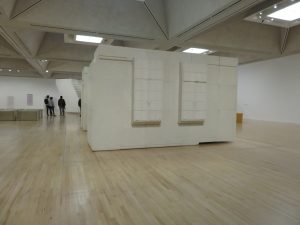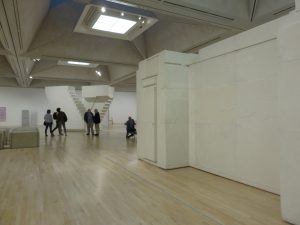Seeing a large-scale sculpt such as ‘Ghost’ in person at her Tate exhibition, was an incredibly valuable experience. Sculpture and installation are mediums in particular, demand the experience and exhibition space surrounding it to achieve what, arguably, the purpose of exhibitions aim. Looking at objects presented 2-Dimensionally does not exert the same level of impact upon viewers and therefore exhibits are treasured memories for the perceivers.
‘Ghost’ by Rachel Whiteread challenges the native perception of a living room being structurally sound, representative of the owner’s character, and comforting. This mix of architecture and sculptural installation art presents interior space in a way we don’t typically recognise, despite it being a fundamental part of our existence. By the technique of inverted space, Whiteread creates life-sized casts presenting a physical, ‘anatomical’ (If walls could talk: An interview with Rachel Whiteread, 2002) representation of space.
Through this space-containing practice, Time is also captured in a state of frozen-ness, holding memories of the individual who may have lived in the mould of this cast. Ironically through preserving the building’s character, it is subsequently lost within the concrete enclosure, and only the physical structure is left to be seen. Thus further expanding the viewpoint that there is both an interior and exterior, an implied persona, or a side to which no-one but those of the creator’s choosing can see.
Reflecting upon this exhibition, I would like to further it by reading into the concepts of Time, Space, and The Everyday and have begun my research into the Whitechapel Gallery Texts on these.
If walls could talk: An interview with Rachel Whiteread (2002) Available at: http://pastexhibitions.guggenheim.org/whiteread/interview2.html (Accessed 6 February 2017)


